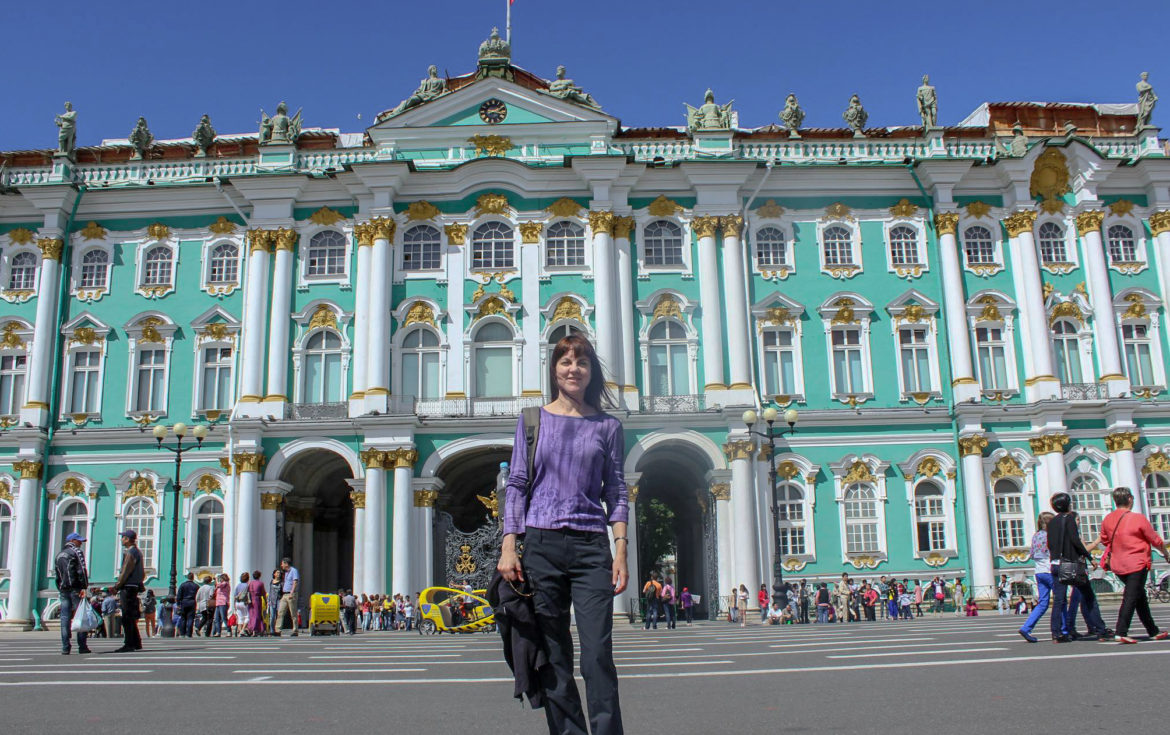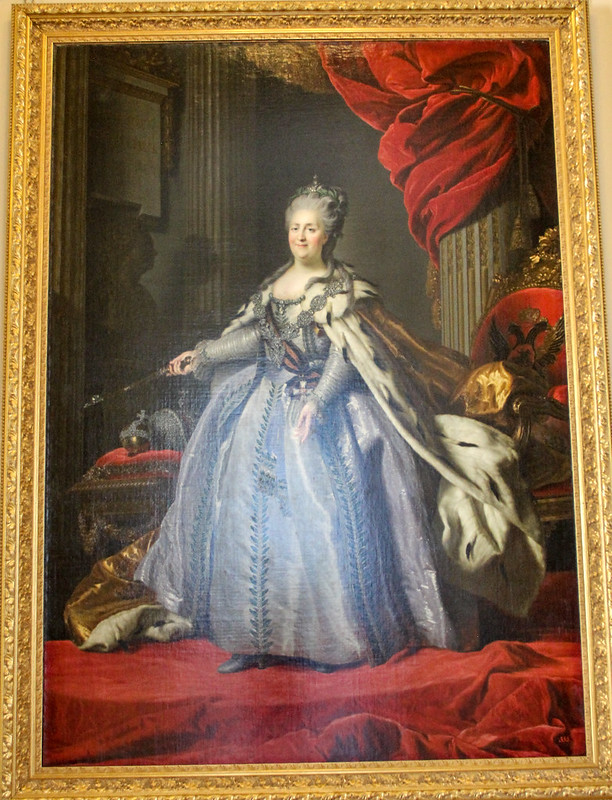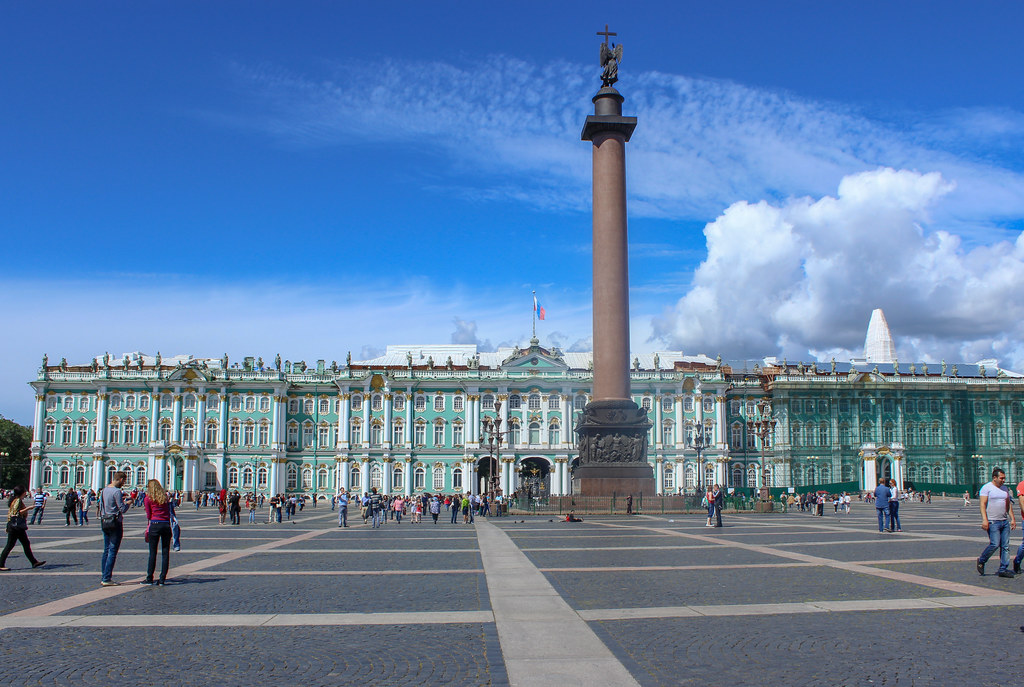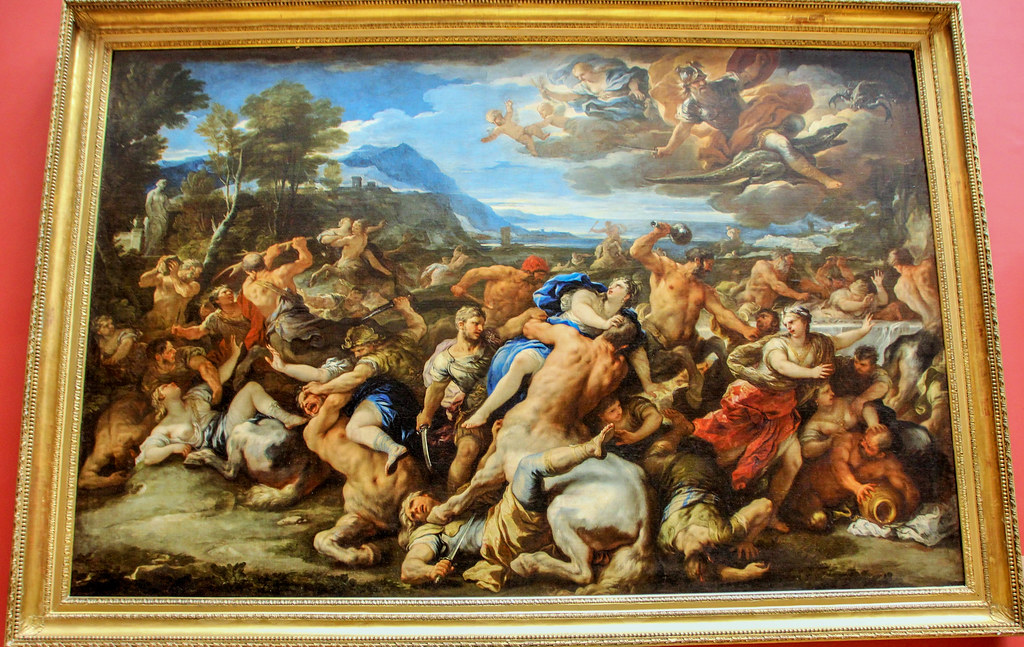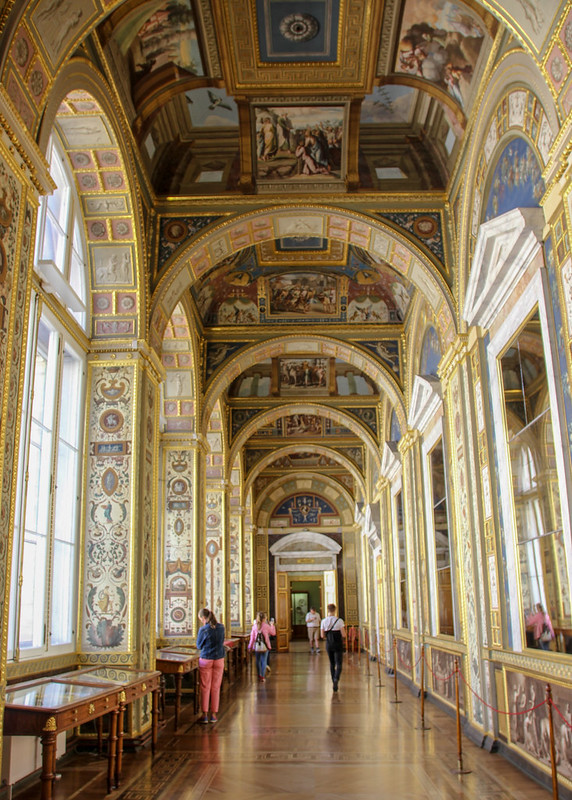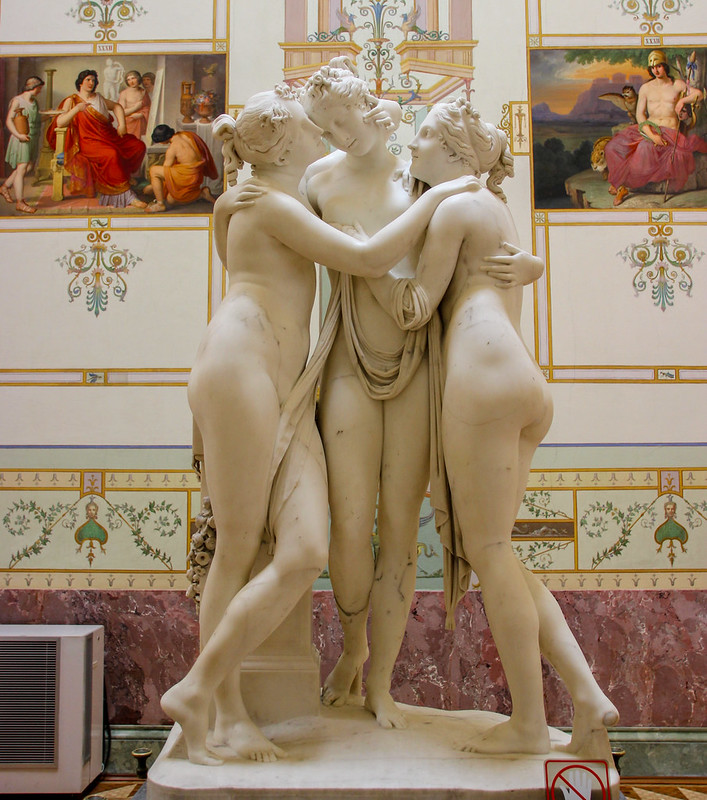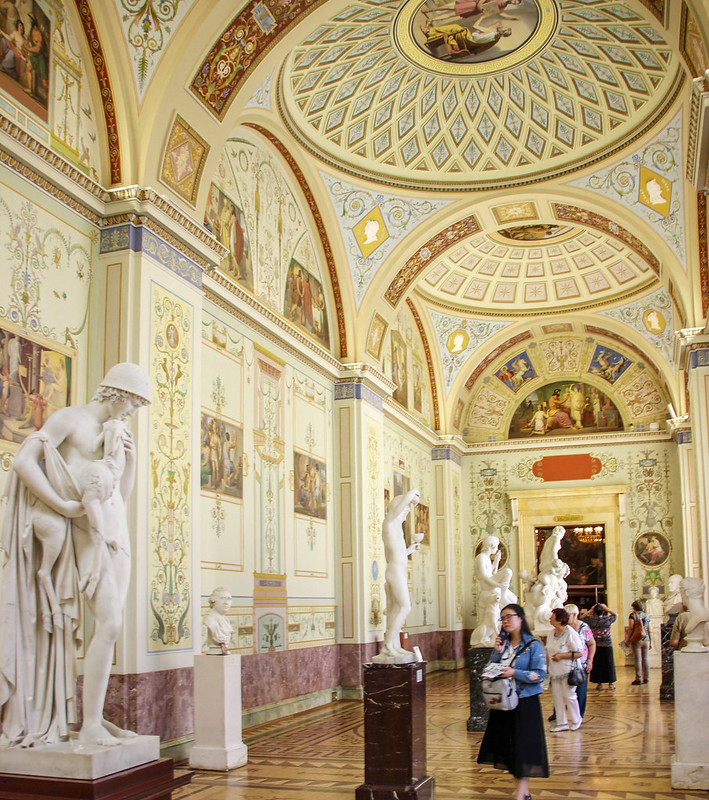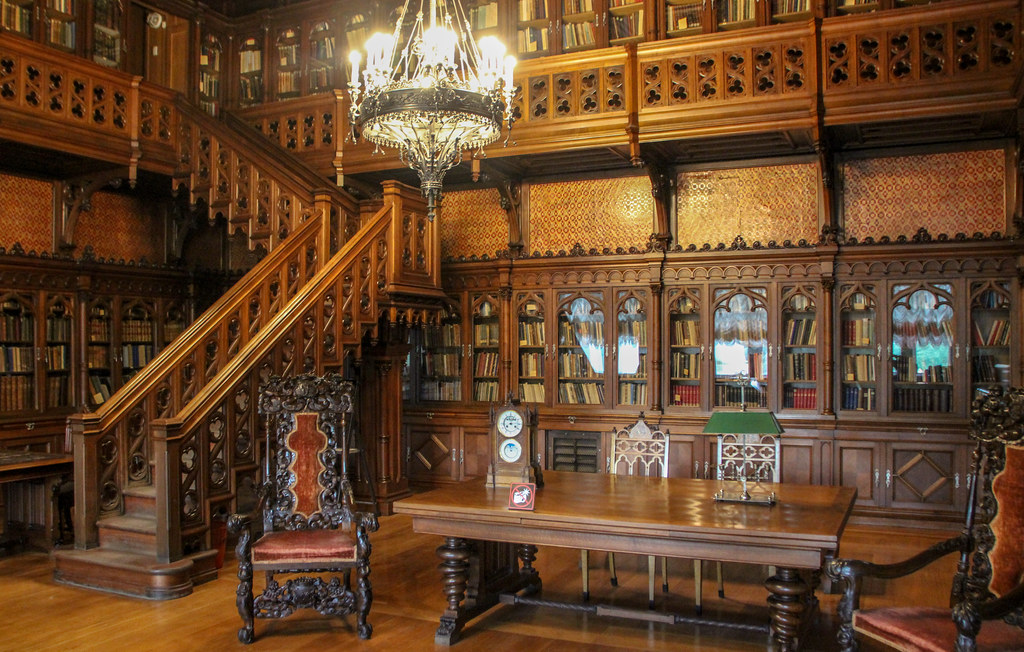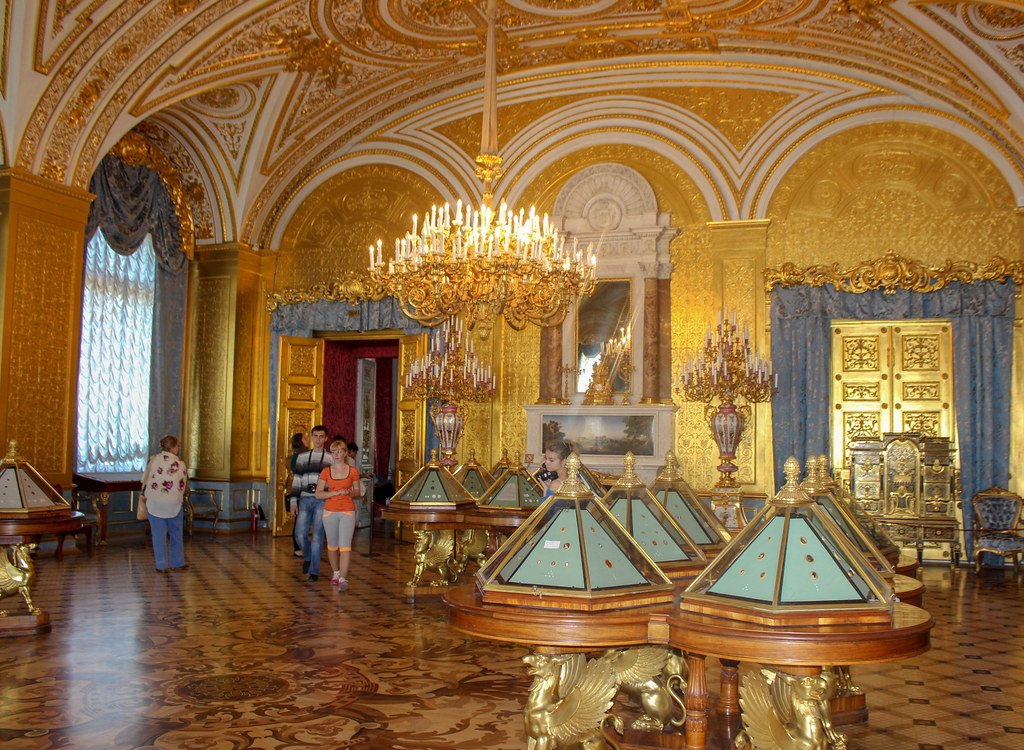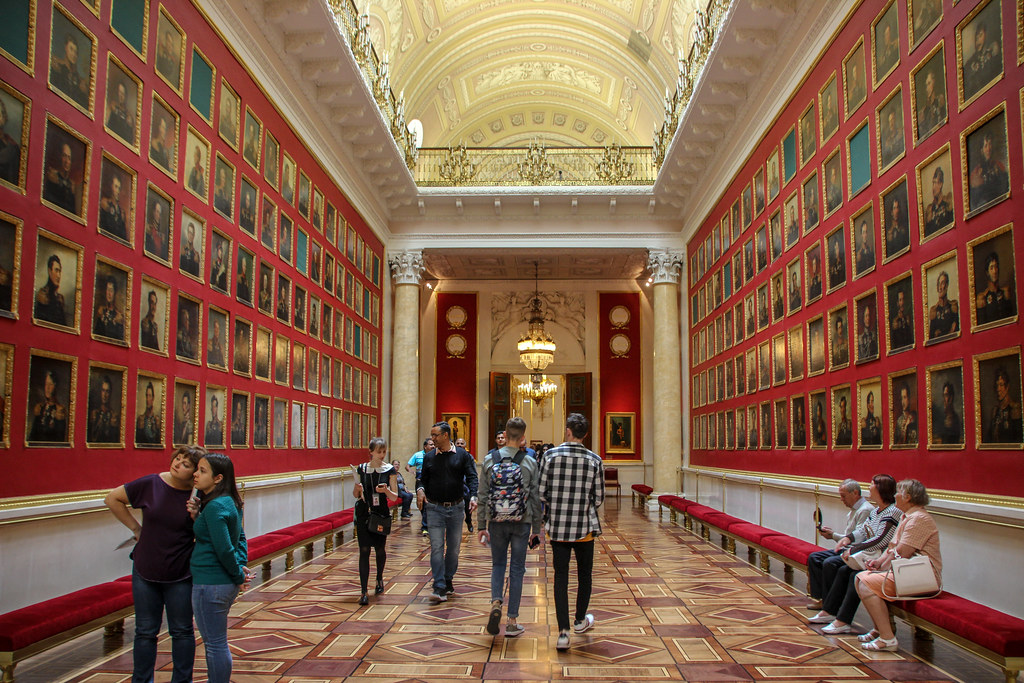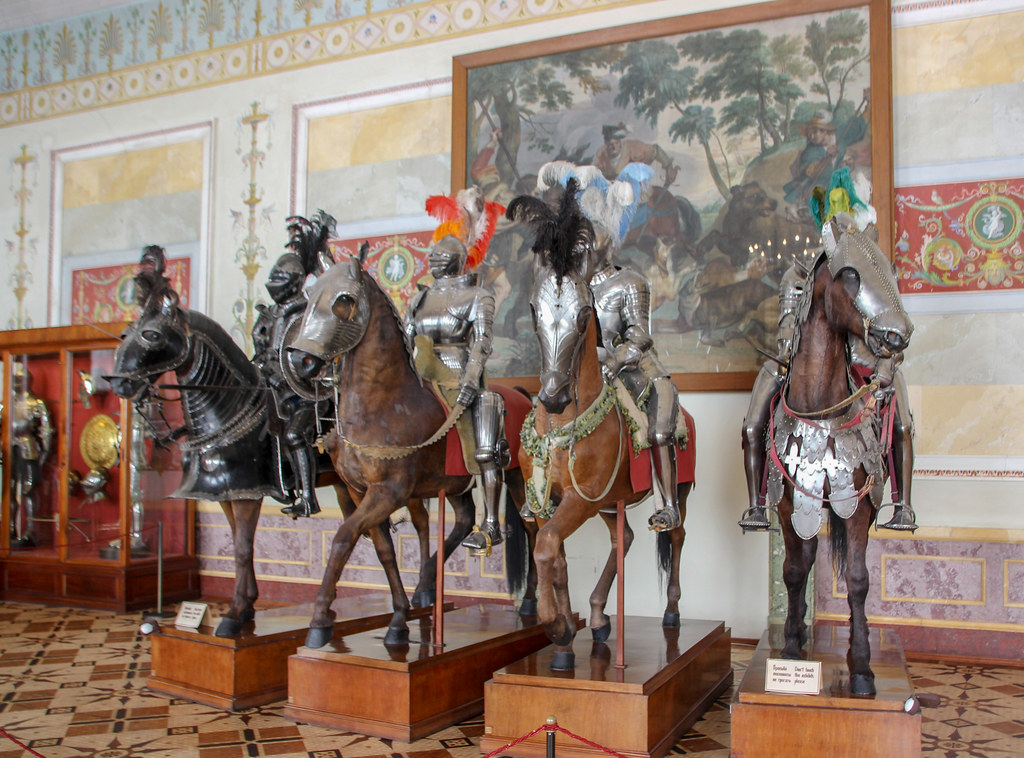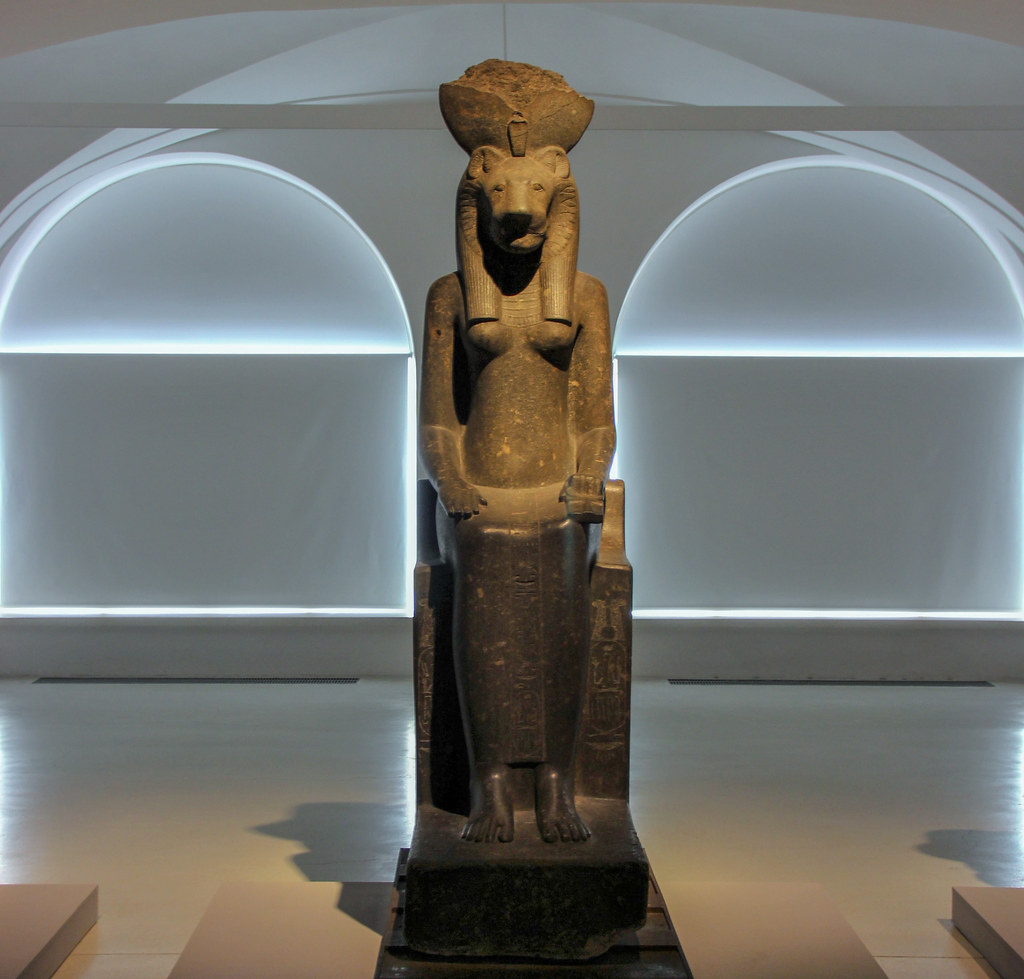Exploring the State Hermitage Museum takes you on an epic spectacle through the World’s Largest Art Collection. Even more, the Winter Palace that displays the fabulous art and culture is a museum on its own. The baroque turquoise, white and gold Hermitage was once the opulent Winter Palace, where Russian Czars lived and ruled. Therefore, touring this magnificent museum is renowned not only its art, but also its interior.
As an Acupuncturist-at-Sea, I visited the Hermitage many times, while stopping at St. Petersburg as a port-of-call. I love sharing the beauty in photos and what I learned about this magnum opus of world culture. Here’s my top 10 highlights to see at the State Hermitage Museum.
State Hermitage Museum History
The palace opened in 1764, when Catherine the Great (left painting) founded the museum by purchasing 255 paintings from Berlin.
Since then, the museum grew to include colossal collections, such as, 17,000 paintings, 600,000 graphic works,12,000 sculptures and 300,000 crafts.
Plus, 700,000 archaeological and 1,000,000 numismatic (coin and paper currency) findings also display here. Overall, there are over 3 million items, spanning the years from the Stone Age to the early 20th century.
State Hermitage Buildings
Collections of Art and Interior
The museum consists of 6 buildings along the Neva River, with the Winter Palace as the crowning Turquoise, white and gold jewel. Majestically, this building is a museum all on its own. Therefore, the Interior is just as fabulous as the art that resides in the palace.
The baroque museum’s exquisite star attraction is its Western European Art. However, it has other prestigious collections, such as, Egyptian Antiquities, prehistoric art and Russian Art. Plus, famous Interiors of the palace showcase, for example, the Military Hall, Malachite Room and Nicholas II Library.
Tips for Managing Time
Seeing the State Hermitage Museum Highlights
The State Hermitage Museum can be overwhelming and confusing to explore, unless you plan ahead. Coming all the way to St. Petersburg is a big deal for most of us because it’s so remote. So, you may as well see the largest collection of art in the world well, while you are here. By being prepared this can be one of the most rewarding experiences of your life.
Firstly, buy the ticket online or get a tour because the admission queue requires a minimum 1-2 hours of standing on cement. Also, the 2-day passes are ideal, because I advise spending a minimum 2 days exploring this extravagant museum and its 6 buildings.
Overall, I recommend 1 day at the Winter Palace Complex, along with the Large and Small Hermitage. This is where the lion share of the art and culture resides. Then, I recommend the second day at the yellow General Staff House Building across the Palace Square of the Hermitage, housing the extraordinary French collections and modern art.
Most importantly, research the museum before coming and map out your priorities/locations among this colossal maze of art and culture.
The State Hermitage Museum Collections include Egyptian and Classical Antiquities, Prehistoric Art, plus Jewelry and decorative art. Most noteworthy, its main attraction is the Western European Art Collections, such as, Italian Renaissance, Italian and Spanish Fine Art, Dutch Golden Age and Flemish Baroque, and German, Swiss British and French Fine Art. Plus, in the General Staff House Building are the French collections, such as, Neoclassical, Impressionist, Post-Impressionist, along with the eclectic modern art.
State Hermitage Museum
Top 10 Highlights
This historical site was the center of St. Petersburg and the Russian Empire for centuries. Therefore, significant events happened here, such as, parts of the October Revolution of 1917 and the Bloody Sunday Massacre. The gorgeous turquoise, gold and white Winter Palace looms over the square, with the red granite 47.5 m high Alexander Column in the center.
Across the square from the Winter Palace is the yellow bow-shaped Building of the General Staff, centered on a double triumphal arch, crowned with a Roman Quadriga (chariot drawn by 4 horses).
This bustling square is a wonderful place to step back and get perspective. It’s awe-inspiring and chilling to imagine all the history that happened here. There are endless photo ops, even with costumed characters in colorful period pieces, circulating with the visitors. Also, there are food stands and musicians to celebrate the venue.
This red-carpeted main entrance to the Winter Palace introduces you to a world of culture and elegance. The stair hall still expresses the original 18th century style in gold and white. Its ceiling illustrates the Gods at Olympus, decorated with alabaster statues of Wisdom and Justice. This is a great place for a selfie, at this iconic Hermitage entrance.
Western European Art
(Winter Palace/Hermitage Complex)
This is the main attraction of this museum, requiring a map or guide. Because the Western European Art is very spread out, plan from the map given to you at entrance. (Remember, however, that the French Impressionism and Modern Art is in the separate building across the square at the General Staff House.)
Within the Winter Palace/Hermitage Complex is the Western European Collections, including masterworks from the 13th-19th centuries.
For example, sections include the Italian Renaissance and Italian/Spanish Fine Art, such as, Giorgione, Da Vinci, Titian, Veronese, Goya, El Greco, Raphael. Also, the Dutch Golden Age and Flemish Baroque includes Masters, such as, Van Dyck, Rubens, and Rembrandt. Plus, there’s a section with German, Swiss, British and French Fine Art.
The Raphael Loggia (Gallery)
Originally commissioned by Empress Catherine II, The Raphael Loggia is the exact replica of the Gallery from the Papal Palace in Vatican City. Furthermore, Raphael’s sketches became painted as frescoes of the Papal Palace. The Loggia’s vaults are decorated with scenes from biblical stories. Also, the walls bestow paintings with decorative motifs, known as “grotesques”.
Gallery of the History of Ancient Painting
This stunning gallery features an exhibition of the gorgeous white marble sculptures of Antonio Canova and his followers. The room is a beautiful backdrop designed in Greek Revival style, with walls decorated by Ancient Roman paintings.
Furthermore, the inlaid parquetry floors of light and dark wood complement the artistry of the gallery. Most noteworthy, exquisite sculptures of Canova embellish the room, such as, The Three Graces, The Kiss of Cupid and Psyche and Mary Magdalen.
Interior Room Favorites
Malachite Room, Boudoir & Library of Nicholas II
Because this palace is a museum in itself, numerous rooms are delightful to see. For example, my 3 favorites are the Malachite Room, the red Boudoir and Library of Nicholas II. Most noteworthy, the opulent malachite room dons columns, fireplace and extravagant urns/vases of gorgeous, green Malachite. This room links the state rooms to the private rooms.
Also, the inferno of fiery red from the Boudoir is a vivid display of pretension. Another favorite of mine is the distinguished wood library of Nicholas II, the last Russian emperor. This gorgeous display uses English Gothic motifs with a coffered walnut ceiling. The bookcases line up in the upper gallery reached by an elegant staircase.
Finally, the Gold Drawing room with a vaulted, gilt ceiling in Byzantine style is stunning and elegant, so this is not to be missed.
Military Hall
Overall, this regal red gallery of the Winter Palace is a setting for 332 portraits of generals who participated in the Patriotic War of 1812.
Knight’s Hall
State Hermitage Museum Highlights
True to the Hermitage theme of extravagance, this hall of Western European arms and armor displays more than 8,000 items. Approx. 200 exhibits provide a picture of development of the armorer’s craft from the 15th -17th centuries. For example, arms displayed here include tournament, hunting and parade. Also, there is knight’s armor and weaponry.
Egyptian Hall
This exhibition on the ground floor follows the cultural history of Ancient Egypt. The Old Kingdom displays as wall reliefs from tombs of the nobles. Furthermore, the Middle and New Kingdoms exhibit stelae and wooden figurines. Also, the masterpiece statue of Cleopatra VII is a must-see attraction.
French Impressionism and Modern Art
Don’t Miss the General Staff Building!
Lastly, here is where I admit my regret. I didn’t go to this building, even after being to the Hermitage several times. Across the Palace Square from the Winter Palace is the yellow bowed General Staff Building.
This houses the French collections, such as, the Impressionists and Post-Impressionists. For example, it includes paintings by Renoir, Monet, Van Gogh, Cezanne, Degas and Gauguin. Also, eclectic Modern Art includes works by Kandinsky, Picasso and Matisse. This is my excuse to go back and finally see this section!
Enjoy State Hermitage Museum Highlights!
Truly one of the most inspiring places in the world, this museum displaying the world’s largest art collection is a must-see attraction for anyone visiting St. Petersburg, Russia. Overall, to fully appreciate the magnitude of its artistry, plan ahead to get the most of your time at this magnum opus of humanity.
Read More!
Spectacular St. Petersburg, Russia’s Top 12 Attractions
Historic Vladivostok, Russia’s Walking Tour & Top Attractions

